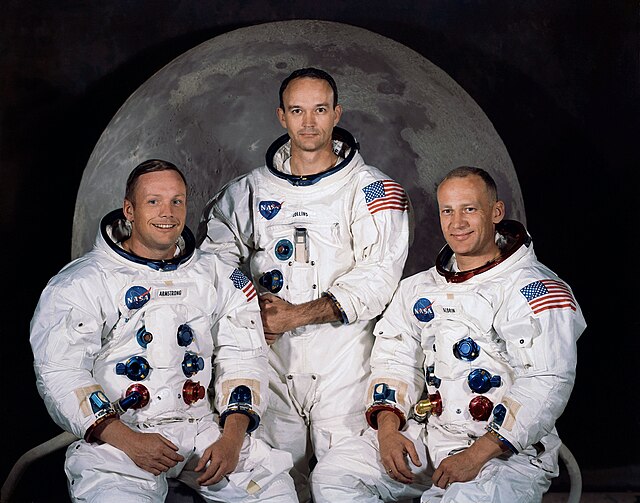Command module Columbia (CM-107) is the spacecraft that served as the command module during Apollo 11, which was the first mission to land humans on the Moon. Columbia is the only spacecraft of the 1969 Apollo 11 mission that returned to Earth.
Columbia on display at the National Air and Space Museum in Washington, D.C.
Columbia Module in its new exhibit on display at the Air and Space Museum in Washington D.C.
Interior of the Command module
Apollo 11 was the American spaceflight that first landed humans on the Moon. Commander Neil Armstrong and Lunar Module Pilot Buzz Aldrin landed the Apollo Lunar Module Eagle on July 20, 1969, at 20:17 UTC, and Armstrong became the first person to step onto the Moon's surface six hours and 39 minutes later, on July 21 at 02:56 UTC. Aldrin joined him 19 minutes later, and they spent about two and a quarter hours together exploring the site they had named Tranquility Base upon landing. Armstrong and Aldrin collected 47.5 pounds (21.5 kg) of lunar material to bring back to Earth as pilot Michael Collins flew the Command Module Columbia in lunar orbit, and were on the Moon's surface for 21 hours, 36 minutes before lifting off to rejoin Columbia.
Buzz Aldrin on the Moon in a photograph taken by Neil Armstrong, who can be seen in the visor reflection along with Earth, the Lunar Module Eagle, and the U.S. flag
Left to right: Neil Armstrong, Michael Collins, Buzz AldrinApollo program← Apollo 10Apollo 12 →
President John F. Kennedy speaking at Rice University on September 12, 1962
CAPCOM Charles Duke (left), with backup crewmen Jim Lovell and Fred Haise listening in during Apollo 11's descent







